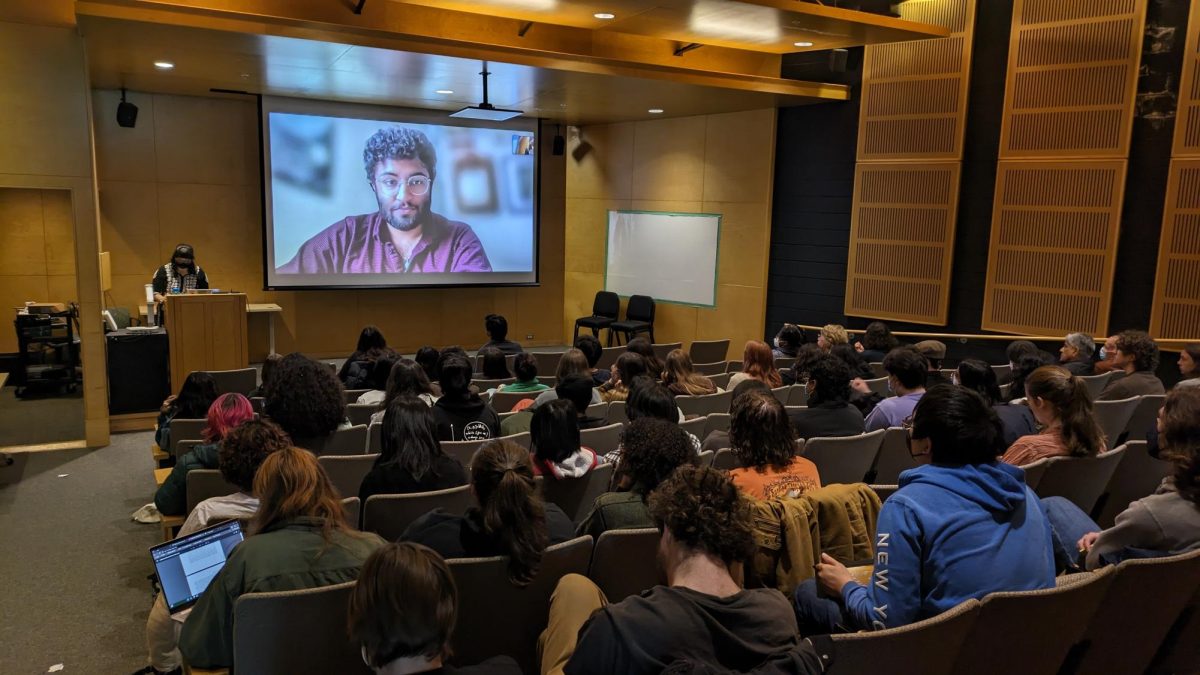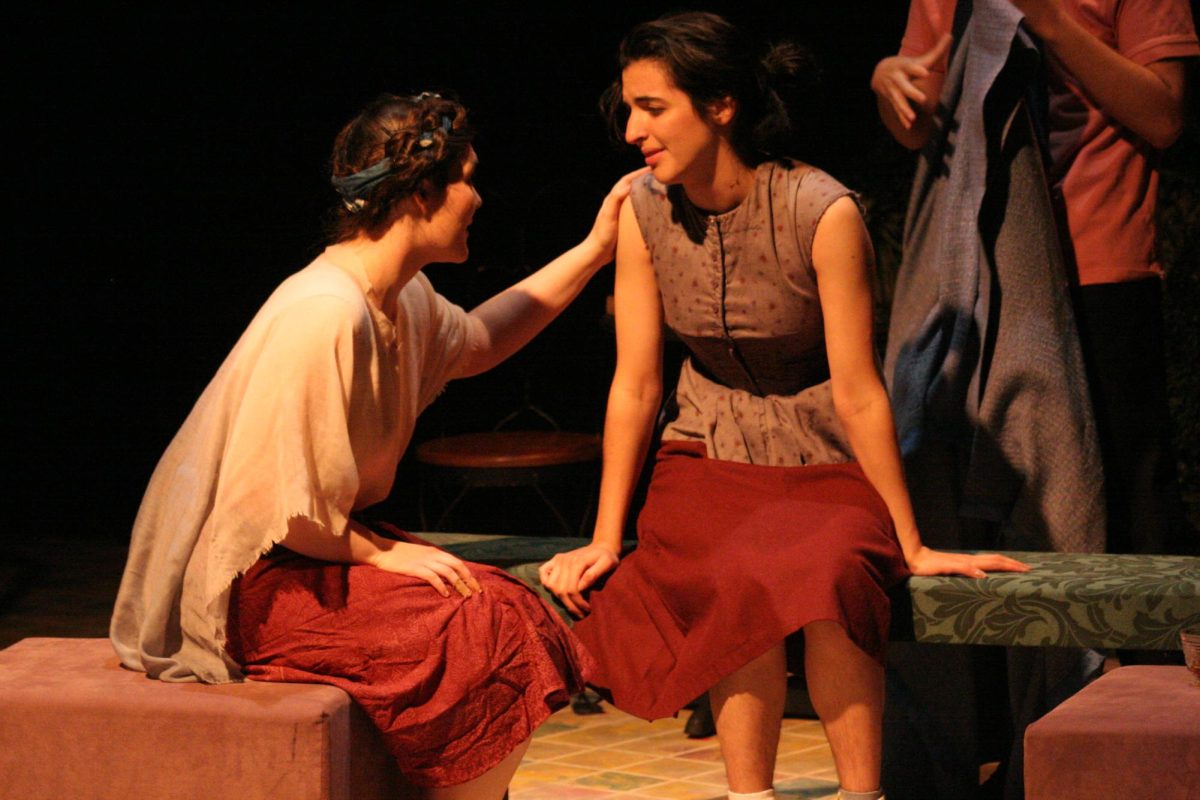Activists Concerned Over Black Student Enrollment Numbers
November 21, 2014
Members of Student Senate formed a task force in response to the efforts of student activists, who expressed concern at a recent plenary that the percentage of black students and other students of color at Oberlin is too low.
According to College junior and Student Senator Nick Canavan, the new task force that Senate unanimously voted to create is currently organizing a panel discussion for next semester about increasing diversity at Oberlin.
“We want to have as many different people with different types of knowledge because this is such a far reaching issue. … Having not only student leaders for groups on campus but also having representatives [who] know how our finances work,” said Canavan.
Using the U.S. Department of Education’s methodology for college diversity statistics, the percentage of students identifying as black at Oberlin is 5.2 percent. Students identifying as white constitute 69.8 percent of the student body; 4.2 percent identify as Asian Americans; 7.2 percent identify as Hispanic, 5.7 percent identify as two or more races; and 7.1 percent are non-U.S. passport holders.
To College senior Ali Amiri, a leader of a new push by students to make Oberlin more diverse, these statistics, which he presented at the plenary session, explain the isolating experience that many students of color face at Oberlin.
“Every time I go to ABUSUA, there’s this feeling of being threatened and this feeling of isolation,” said Amiri. “I think that, because of the low percentages, it becomes a hostile environment, an isolating environment for students of color, and that would increase their likeliness to drop out. It’s certainly reflected in my experience. … If I’m not mistaken, I’m either the last or one of two black students that were in African Heritage House [my first year] as freshmen males who hasn’t dropped out,” he said.
The high watermark for black students at Oberlin — the particular group that Amiri is most focused on — came in 1974, when Oberlin had 317 black students, which constituted 11.9 percent of the student body. The nadir for Oberlin’s black population came in 2005, when Oberlin had only 151 black students, which made up 5.3 percent of the student body.
Amiri added that administrators have not yet given him statistics on the number of black students who actually graduate from Oberlin each year.
“No one’s bragging about these numbers. You don’t see Krislov, you don’t see African Heritage House posting these numbers during A-House dinner or anything. You see these numbers only if you dig for them,” Amiri said.
According to Vice President and Dean of Admissions and Financial Aid Debra Chermonte, the main challenge to increasing enrollment of students of color is assuring that they choose Oberlin over other similarly selective colleges.
“The competition is greater than ever nationwide,” said Chermonte in an email to the Review. “We welcome student input on our yield activities, i.e. how we might make Oberlin the top choice of all admitted students,”
To Amiri, a partial solution to this problem may be to get more black students to apply by advertising Oberlin more aggressively in black communities.
“In my hometown, no one knows what Oberlin is. Andre Patton [OC ’13] made the comment that he lives in Cleveland — extremely high black percentages — and no one even knows what Oberlin is,” said Amiri. “If you look at where Oberlin does advertise, they advertise to primarily white schools.”
Amiri acknowledged that Oberlin does do “a lot” to attract students of color and praised the Oberlin Access program in particular. But he questioned the complacency he senses at Oberlin regarding diversity.
The administration countered Amiri’s criticisms by citing its attempts at outreach.
“When we travel, we often select high schools in geographic regions from which we have seen a good number of prospective students and applicants in past years, and we are always in search of less familiar schools with potential,” said Chermonte. “We also include visits to high schools that have significant student of color and low-income populations and work with hundreds of community-based organizations.”
For Amiri, however, these efforts are not enough.
“The thing is for you to just go halfway, or just go … a tenth of the way, and then to stop at 5–7 percent [of black students at Oberlin] — you never won the war. You might be having battles, but you’re not winning the war until the day that you have students of color feeling comfortable on this campus and you have enough students of color who are actually graduating,” he said.
President Krislov suggested that interpretation of these percentages may cause the figures to appear lower than they truly are. Ross Peacock, an administrator from the Department of Institutional Research, highlighted two recent changes in how these demographics are recorded.
According to Peacock, one of these changes occurred in 2010, when the U.S. Department of Education changed its policy on how institutions report their racial and ethnic demographics. The changes define “Hispanic” not as a race but as an ethnicity.
“That means that anybody who identifies as Hispanic is reported that way and only as Hispanic regardless of any race(s) selected,” said Peacock.
According to Peacock, the second major change mandates that any student who identifies as Hispanic and selects more than one race is reported simply as “Two or More.”
“Only students who are not Hispanic and do not select more than one race are reported as that race to the Department of Education,” said Peacock. “For most institutions, the new reporting requirements changed the counts by race from how they were traditionally reported, even though the actual composition of the student body may not have changed.”
Looking forward, Amiri hopes to work with other underrepresented groups to further expand the demand for increased enrollment of students of color. Although the Student Diversity Panel won’t be meeting until next spring, Amiri is currently planning a post-Thanksgiving protest wherein students will place jackets on chairs throughout Stevenson Hall to represent what he defines as a severe lack of representation for students of color.
“Awareness is the first step to change,” Amiri said.














